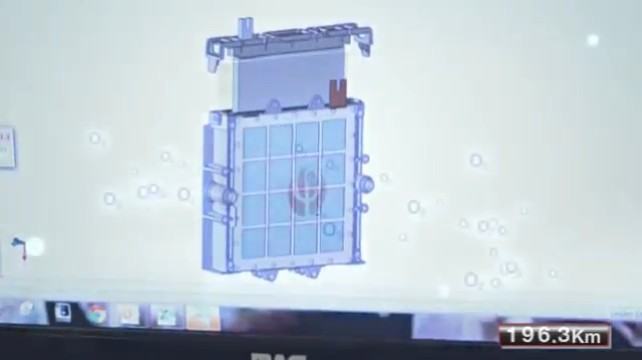Aluminum battery is a great addition for an electric vehicle.

Phinergy was the first company in the world to produce an air-aluminum battery suitable for use in a car. The 100-pound Al-Air battery contains enough energy to provide 3,000 km of travel for a compact car. Phinergy conducted a demonstration of technology with Citroen C1 and a simplified version of the battery (50 plates of 500 g each, in a case filled with water). The car traveled 1,800 km on one charge, stopping only to replenish water supplies - consumable electrolyte ( video ).
Aluminum is no substitute for lithium-ion batteries (it does not charge from the outlet), but it perfectly complements them. After all, the car makes 95% of trips over short distances, where standard batteries are enough. An additional battery provides backup in case the battery is discharged or if you need to go far.

')

The air-aluminum battery generates current due to the chemical reaction of the metal with oxygen from the surrounding air. Aluminum plate - anode. On both sides of the cell is covered with a porous material with a silver catalyst that filters CO 2 . Metal elements slowly degrade to Al (OH) 3 .
The chemical formula of the reaction is as follows:
4 Al + 3 O 2 + 6 H 2 O = 4 Al (OH) 3 + 2.71 V
This is not some sensational novelty, but a well-known technology. It has long been used by the military, since such elements provide an exceptionally high energy density. But earlier, engineers could not manage to solve the problem with CO 2 filtration and the associated carbonization. Phinergy claims that it has solved the problem and in 2017 it is possible to produce aluminum batteries for electric vehicles (and not only for them).

The lithium-ion Tesla Model S batteries weigh about 1000 kg and provide 500 km mileage (in ideal conditions, in reality 180-480 km). For example, if you reduce them to 900 kg and add an aluminum battery, the weight of the machine will not change. The range of the battery will drop by 10-20%, but the maximum mileage without charging will increase right up to 3180-3480 km! You can get from Moscow to Paris, and something else remains.
In some ways, this is similar to the concept of a hybrid car, but it does not require an expensive and bulky internal combustion engine.
The lack of technology is obvious - the air-aluminum battery will have to be changed in the service center. Probably once a year or more. However, this is quite an ordinary procedure. Tesla Motors last year showed how Model S batteries change in 90 seconds ( amateur video ).
Other disadvantages are the energy consumption of production and, possibly, the high price. The manufacture and processing of aluminum batteries requires a lot of energy. That is, from an environmental point of view, their use only increases the overall electricity consumption in the entire economy. But on the other hand, consumption is more optimally distributed - it leaves large cities to remote areas with cheap energy, there are hydroelectric power stations and steel mills there.
It is also unknown how much such batteries will cost. Although aluminum itself is a cheap metal, the cathode contains expensive silver. Phinergy does not tell exactly how the patented catalyst is manufactured. Perhaps this is a difficult technical process.
But with all its shortcomings, the air-aluminum battery still seems to be a very convenient addition to an electric car. At least, as a temporary solution for the coming years (decades?), Until the problem of battery capacity disappears.
In Phinergy, meanwhile, they are experimenting with a "rechargeable" zinc-air battery . It generally runs for thousands of hours without much chemical degradation, since zinc oxidation is a reversible process.
Similar scientific developments are underway in Russia .
Source: https://habr.com/ru/post/226645/
All Articles